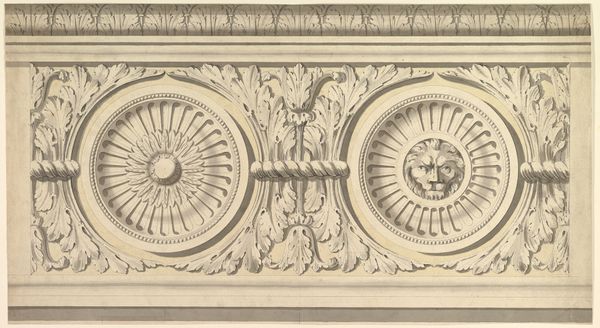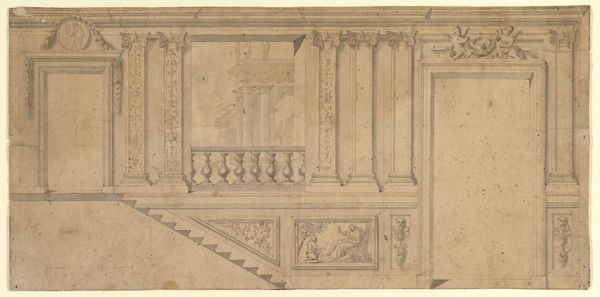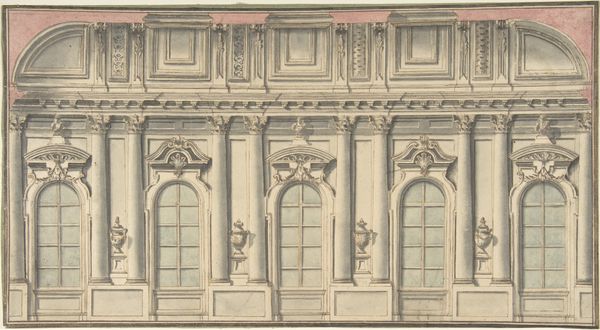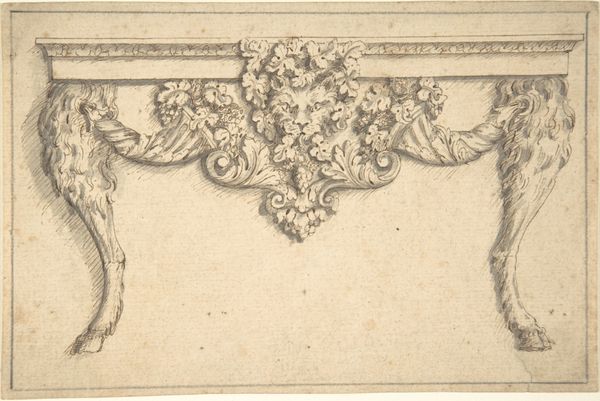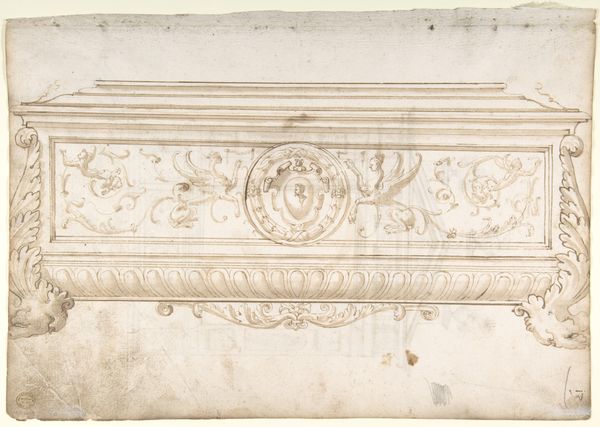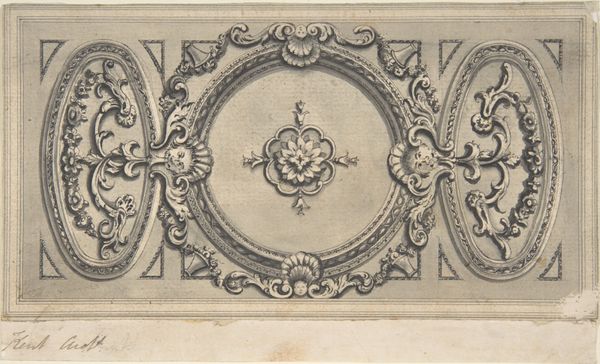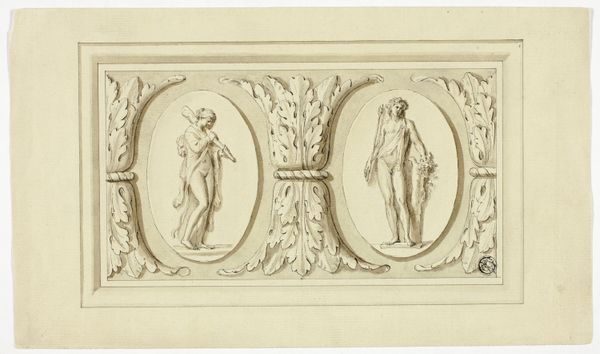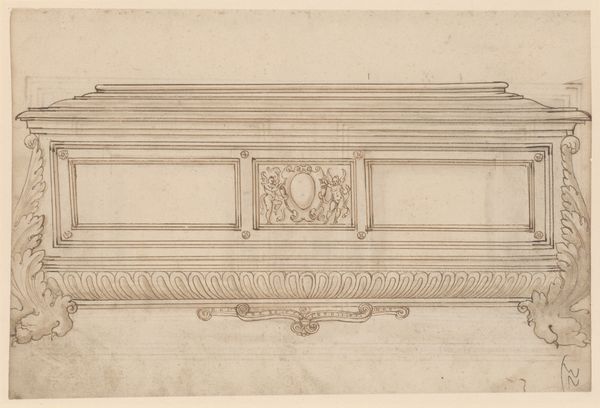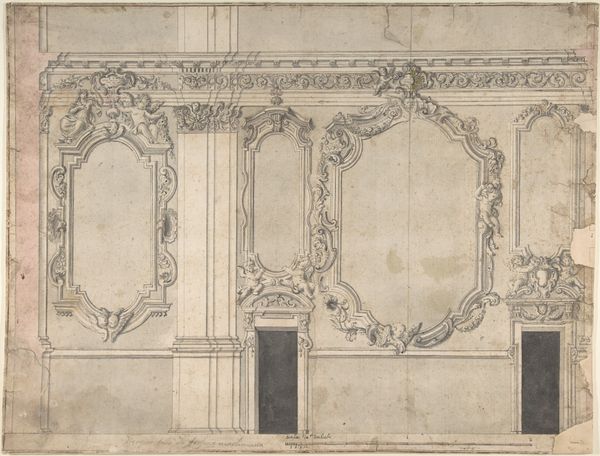
drawing, print
#
drawing
#
neoclacissism
# print
#
form
#
line
Dimensions: 11 x 15 1/2 in. (27.9 x 39.4 cm)
Copyright: Public Domain
Curator: The artwork presented before us is a "Design for Andirons," created between 1770 and 1795 by Jean Louis Prieur le Jeune. It's currently held at the Metropolitan Museum of Art. It feels like such a measured, formal design. What can you tell me about how we might interpret such an image? Editor: What strikes me first is the bilateral symmetry and clean lines. The rendering is so precise. What do you see when you look at it from an art perspective? Curator: Considering its intrinsic qualities, let's observe how Prieur utilizes form. The geometric components—cubes, cylinders, and spheres topped by what appear to be stylized pineapples—are rendered in a way that suggests mass, stability. Editor: How do the lines influence that sense of stability? Curator: The linearity dictates the clarity of form; note the precision of each contour. We see how he carefully modulated tonal values to depict shadow and volume. These formal choices, I believe, are crucial to appreciating the design's architectural integrity. Do you see what I mean? Editor: Yes, absolutely. It is fascinating how the design, while relatively simple in its components, creates a complex visual experience due to the precision of line and shading, which adds such depth to a rather restrained work. Curator: Precisely. Prieur masterfully orchestrates these basic geometric units into a visually harmonious design. Note the proportional relationships between the base, the central panel, and the crowning elements. The linear elegance speaks to a careful consideration of neoclassical ideals. Editor: It’s like a miniature architectural study, all about proportion and form. I hadn’t really considered it that way at first! Thanks. Curator: Indeed. Thinking through this approach has changed my perspective too!
Comments
No comments
Be the first to comment and join the conversation on the ultimate creative platform.
